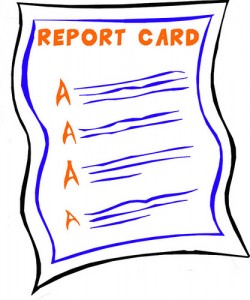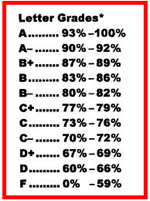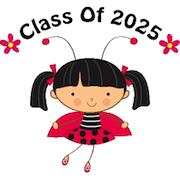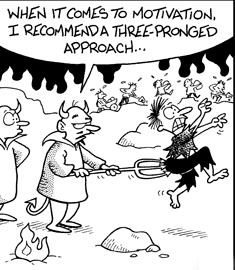
This past year, I participated in PLP (Powerful Learning Practice) and made some significant changes in the way I teach and the tools I use. I feel my students truly benefited from the shift I began to make. However, I am still developing, learning, and growing. I took two graduate classes this summer and I’ve grown my capacity to create new projects with web 2.0 tools. This school year, I plan to utilize more inquiry-based and passion-based learning in my classroom.
While I feel I have made enormous progress in the past 12 months, I’ve come to know many other educators who “got on board” years ago and are much more proficient than I am. They are part of my Personal Learning Network, and I continue to learn from them every day.
When I was observed this year, I wanted my evaluation to be based on my effectiveness in the classroom, but I also wanted it to reflect the growth and progress I have made as a teacher. For this reason, I chose to do something different with my students – something a bit out of my comfort zone. Was I afraid it wouldn’t be perfect? Absolutely. There was little likelihood that it would go as smoothly as a “traditional” lesson. It was less structured, the technology might fail, and the kids would be more talkative.
But I knew it would be OK. I’m fortunate to work in an environment where we are encouraged to try, fail, reflect, and learn on a continuous basis. What freedom. And I cherish it. I can explore, experiment, and figure out what tools and methods work best for my students and me. In other words, I can focus on learning. It doesn’t matter that the teacher down the hall might be ahead of me using writing workshops or behind me integrating technology – I’m not being compared to her. What will matter in my evaluation is MY effort, growth, and progress — that I am dedicated to my students, a life-long learner, and model that for my students.
My students aren’t so fortunate
Unfortunately, my students in 3rd and 4th grade do not have this advantage. Even though the learning parts of their brain are still developing (all at different rates, I might add), they don’t get the freedom to think and explore at their own pace, or to be assessed on their progress, effort, and growth. Why not?
We still use letter grades in my elementary school.
And letter grading just doesn’t make sense. Let’s put some pertinent research on the the table:
Piaget’s Theory of Cognitive Development assigns wide ranges to major developmental stages. The Preoperational Stage occurs anywhere between 2 and 7 years of age. The Concrete Operations Stage occurs anywhere between 7 and 12 years of age. In other words, what might happen developmentally for one child at 7, may not happen for another until 10. So who are we to decide that it must happen at 8?
This article in Child Development discusses the close interrelation of cognitive and motor development and argues that when something affects either motor or cognitive function, both systems are impacted.
Finally, these guiding principles for quality early primary programs address the way children learn, and are posted by the California Dept. of Education:
Some children walk at 10 months. Some don’t walk until 15 months. Human young walk when they are developmentally ready. Some learn to ride a two-wheeler at 5. Others can’t swing it until they are 8. Some kids can swallow pills at 6. My daughter was almost 12. When they are in their 30s, no one will care what came when.
Whether discussing motor development or cognitive development, children reach milestones at different times. We push students to learn multiplication facts in 2nd grade. Some pick it up easily, and some simply cannot seem to attain the skill until 4th or 5th grade. One of my daughters began reading at 3. The other was almost 6. Their rates of cognitive development were very different, and yet now, at the ages of 19 and 15, those differences have vanished. The “late” reader was recently inducted into the National Honor Society as a high school sophomore. Their elementary school years were growing years, and did not prove to be reliable indicators of later capacities or performance.
And let’s not forget the psychological effects
As important as they are, let’s put developmental rates aside for a moment. There are also significantpsychological effects connected with the use of letter grades. Alfie Kohn lists these points in his post “From Degrading to De-Grading.” I’m sharing a sizeable chunk of it here, but it’s compelling stuff:
Three Main Effects of Grading
Researchers have found three consistent effects of using – and especially, emphasizing the importance of – letter or number grades:
1. Grades tend to reduce students’ interest in the learning itself. One of the most well-researched findings in the field of motivational psychology is that the more people are rewarded for doing something, the more they tend to lose interest in whatever they had to do to get the reward (Kohn, 1993). Thus, it shouldn’t be surprising that when students are told they’ll need to know something for a test – or, more generally, that something they’re about to do will count for a grade – they are likely to come to view that task (or book or idea) as a chore.
While it’s not impossible for a student to be concerned about getting high marks and also to like what he or she is doing, the practical reality is that these two ways of thinking generally pull in opposite directions. Some research has explicitly demonstrated that a “grade orientation” and a “learning orientation” are inversely related (Beck et al., 1991; Milton et al., 1986). More strikingly, study after study has found that students — from elementary school to graduate school, and across cultures – demonstrate less interest in learning as a result of being graded (Benware and Deci, 1984; Butler, 1987; Butler and Nisan, 1986; Grolnick and Ryan, 1987; Harter and Guzman, 1986; Hughes et al., 1985; Kage, 1991; Salili et al., 1976). Thus, anyone who wants to see students get hooked on words and numbers and ideas already has reason to look for other ways of assessing and describing their achievement.
2. Grades tend to reduce students’ preference for challenging tasks. Students of all ages who have been led to concentrate on getting a good grade are likely to pick the easiest possible assignment if given a choice (Harter, 1978; Harter and Guzman, 1986; Kage, 1991; Milton et al., 1986). The more pressure to get an A, the less inclination to truly challenge oneself. Thus, students who cut corners may not be lazy so much as rational; they are adapting to an environment where good grades, not intellectual exploration, are what count. They might well say to us, “Hey, you told me the point here is to bring up my GPA, to get on the honor roll. Well, I’m not stupid: the easier the assignment, the more likely that I can give you what you want. So don’t blame me when I try to find the easiest thing to do and end up not learning anything.”
3. Grades tend to reduce the quality of students’ thinking. Given that students may lose interest in what they’re learning as a result of grades, it makes sense that they’re also apt to think less deeply. One series of studies, for example, found that students given numerical grades were significantly less creative than those who received qualitative feedback but no grades. The more the task required creative thinking, in fact, the worse the performance of students who knew they were going to be graded. Providing students with comments in addition to a grade didn’t help: the highest achievement occurred only when comments were given instead of numerical scores (Butler, 1987; Butler, 1988; Butler and Nisan, 1986).
While Alfie Kohn is likely the most influential and well-known voice in this arena, many brave educators have followed his lead in the fight against grading.
Canadian grade six teacher Joe Bower has compiled a list of his blog posts on why and how we should abolish grading. He talks about how to include students in determining a final grade (if the district requires), and how to work with parents.
Jeremy MacDonald, a fifth grade teacher and tech coach in Oregon, provides this insight into why he worked to change the way he reported student learning:
It all comes down to what my purpose is as a teacher. I’ve never felt like I had all the answers. Becoming a master teacher is a long process; one of which I still find myself somewhere around the starting line.
I got a good education. I was inspired by some of my teachers and discouraged by others. That is part of why I’m doing this, shifting my focus back to where it needs to be, on the student and learning. A lot of my education dealt with tests and preparing for tests. My motivation was good grades. I can’t say that I learned everything I was supposed to, but as Kohn mentioned, I adapted to each environment and learned how to get the best grades possible.
I don’t want that for my students. I want students to be motivated to learn for the simple sake of learning. By removing the pass/fail consequences of grades, I hope to create a new paradigm for my students–one that consists of learning, reflection, and growth. My purpose as a teacher is to foster learning in an environment where students feel safe to take risks and make mistakes; and I feel I can’t do that if their motivation and my focus is on grades and test scores. Removing traditional grading will allow students to focus more on the process and what they may still need to learn to attain mastery, but without the fear of negative feedback or failing marks.
These arguments are persuasive and compelling. Parents may believe grades provide more information about where a student “stands,” but that shouldn’t surprise us. Most the most part, their school experience was also dominated by grades-driven learning. In reality, a standards-based report or narrative is much more informative.
Reporting progress and learning without grades is not easy, though. It involves intensive note-taking and feedback sessions with students. For the classroom teacher, it means gathering more detail, investing more time, and making more effort.
I recently learned about Pernille Ripp, a teacher who fought the battle to stop grading in her classroom. She contacted Alfie Kohn, collaborated with Jeremy MacDonald (above), who shared her vision, and most importantly, documented the process for others.
Mark Barnes, who advocates for “results-only learning environments” (ROLE), also points out that 21st century children are becoming more focused on achievement via active learning and purposeful feedback, and less from the process of having grades awarded to them. He recently led a session at the Reform Symposium Conference (RSCON3) entitled, “21st Century Assessment: How Narrative Feedback is Eliminating the ABCs.”
It just doesn’t feel right
Yes, this kind of assessment of learning means more work. But don’t we owe it to our students? The fact is, the more I move into 21st century tools and teaching practices, the harder time I have with our current grading system.
The more opportunity I give students to work collaboratively, experiment, and pursue their passions, the harder it is to assign grades to this kind of learning and growth process. Our standard “letter grade” system does not encourage learning. It does not encourage students to take intellectual risks and challenge themselves. It does not encourage creativity or innovation. It encourages memorization, competition, and discovering the easiest and safest path to an A. Does this seem right?
Although the consequences and effects of grading have been discussed for decades (see this 1975 article by James Leary), we continue to utilize practices that do not allow for brain development, have been proven an ineffective way of communicating student learning, and inhibit our children from embracing challenge. It feels unconscionable to me.
It’s time to foster a love of learning, develop a hunger for the challenges of problem solving, and provide students and parents with REAL feedback regarding their child’s learning and progress toward established standards.
Agree? Disagree? Comment below. We only learn by listening, discussing, and pushing our thinking. What’s holding back our transition to more effective assessments of learning?
This was originally posted at Powerful Learning Practice’s Voices From the Learning Revolution http://plpnetwork.com/2011/09/26/grading-%E2%80%93-what-is-it-good-for/










